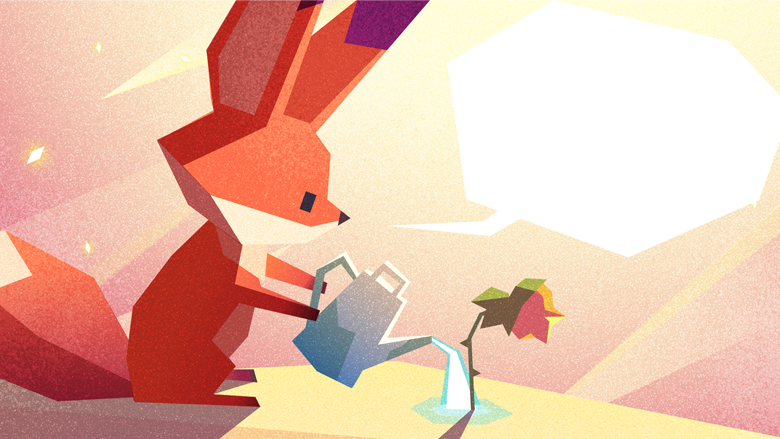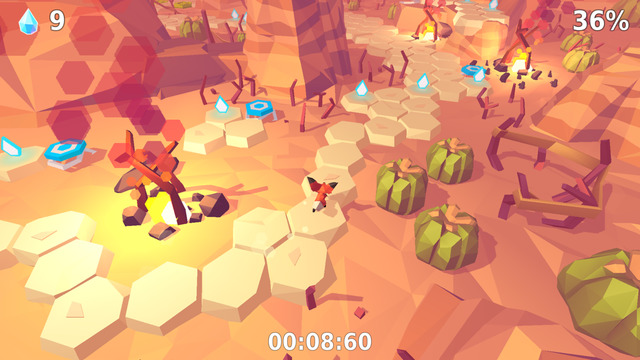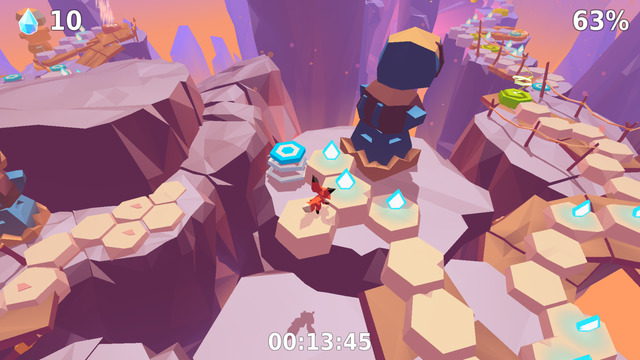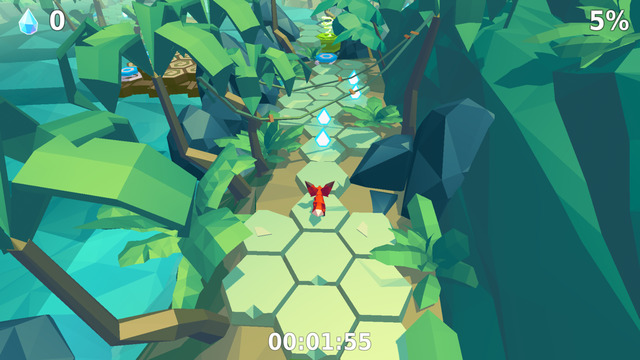Release of the day: The Little Fox
The other day, The Little Fox game from the Ukrainian h8games team was released in the App Store. Yesterday she received a big banner on the iTunes homepage in 86 regions. Read about the project and developers in our publication.

Developers
The Little Fox is the debut game of the Kharkiv studio h8games, founded by former employees of Gameloft and gumi – Oleg Khromov and Oleg Batrakov.
“For both of us, working at Gameloft was the first serious experience. Development in a large company is a special coordinate system, a special experience. In 5 years, we have turned from Junior Developers into Senior Producers and Programming Coordinator, absorbed knowledge and experience and were ready for a new path,” Khromov, who is the CEO of h8games, told us.
In 2014, with the participation of the guys, the Ukrainian division of the Japanese company gumi was founded, which became famous for the game Brave Frontier. For almost two years, the AAA project was being developed, but when about six months remained before the release, gumi began to have financial problems. Many western offices, including Kharkiv, were closed.
“We decided not to disperse, we came to a part of the team with a rather adventurous proposal – to continue working without money on new, already completely our own projects. At the start there were 8 of us, now there are a little more. And so – the first six months of the existence of h8games gave life to The Little Fox project,” says Oleg.

Project
The Little Fox was created largely on popular trends. At the same time manages to avoid stamps. Valuable quality.
The developers themselves position the game as a runner. It’s hard to believe from the screenshots. Isometric projection and hexes are misleading. But technically it is.
The player controls a fox cub who went in search of the Little Prince Saint-Exupery. The fact is that the Rose is sad and dries up without the prince.
The player’s goal at each level is to bring the fox to the final and collect as many tears as possible from the smallest prince, who, having left his planet, is also unhappy.

The game level is made up of numerous hexes. The character moves along it himself at a high speed. As soon as the fox cub flies out of the hex territory, the end of the game occurs. The user must start the level from the beginning.
The game is controlled by two taps. The right edge of the screen is responsible for turning the fox cub on one side of the hex (by 60 degrees) clockwise, left, respectively, for a U-turn in the opposite direction.
The approach to gameplay, as well as the high complexity, are reminiscent of a series of Ketchapp projects – only in a high-end wrapper. The closest game in terms of gameplay here can be called Arrow.
Graphically, the game also does not shy away from fashion. This is loupoli. Only here it looks more organic than usual. The game can be quite represented as a children’s fairy tale, as if made in the style of origami.
However, Khromov does not agree with us here: “You know, while still working at Gumi, we were in Japan and talked with the producer of Brave Frontier, the game that turned gumi into a giant of the game industry. When asked what factors should be taken into account when creating a game, he replied: I did as I like. That’s how we are: we see ourselves as the target audience. Modern young people. People who need interesting and rather complex gameplay, but at the same time – appreciating style and beauty.”
Moments
From the non-obvious moments that I liked.
The complexity of the game is not inferior to that of Flappy Bird. Only there is a lot more content. Plus, the player has a clear motivation thanks to the plot. I’m not talking about the quality of performance. But that’s not the point, of course. The fact is that one click is always separated from the player’s restart after an unsuccessful attempt by the player. No additional loading is performed. Due to this, the moment of frustration is compressed in time to a minimum. That’s cool. Lost – and immediately started from the beginning. In principle, we often see this in games of the same Ketchapp, but for relatively large projects, this is rare.

Next: the game counts the number of attempts to pass the level and shows how much in % of the level the user was able to overcome the last time. It would seem a trifle, but it helps the user a little to assess their progress in the game. There is no situation when you play everything and lose track of sessions without getting a specific result in return.
Focusing on the number of attempts, the user can begin to note how much further he was able to go. For example, in my first 10-15 attempts, I passed 13-20% of the first level. After 51 attempts, I started, as a rule, to reach the mark of 47-53% of the level.
In other words, I saw my progress, despite the fact that I did not get concrete results in the form of passing the level.
Result
A beautiful, interesting project inspired by minimalistic games, but went a little further. From which, it seems to me, I only won. As for monetization, this is a premium product. In the App Store, where it has been released exclusively so far, it can be purchased for $2.99.

The game is featured, as we have already written, on the large banner of the iTunes homepage in 86 countries (data for July 1 for iPhone).